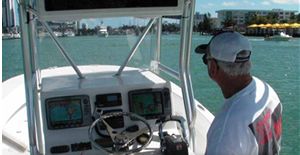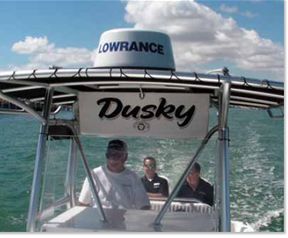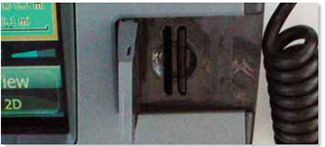
300

288
The last time PS took an in-depth look at radar (May 2006), high-definition radar with advanced digital processing was just over the horizon, and the subject of this report, Lowrance’s BR24 “broadband” radar, was not even a blip on the radar screen—excuse the pun.
But not only has the technology changed, the field of contenders has gone through a dramatic shake-up. Of the five companies whose products were evaluated in that test—Furuno, Garmin, JRC, Brunswick, Raymarine, and Simrad—the last three have gone through significant ownership changes. Brunswick (maker of the Northstar 6000i) and Simrad were rolled into the newly formed Navico, which is also the parent company to Lowrance, Eagle, and B&G brands. In 2010, Raymarine was bought by Flir Systems, a major defense contractor known for its night-vision technology.
While most of the other competitors from that test have been discontinued, the eventual winner—the Furuno NavNetVX 1834C—is still available and has a loyal following among fishermen. The lead tester on that project, Dave Laska of L&L Electronics, in Branford, Conn., clearly did his homework.
While a proper head-to-head test of new players in the field of marine radar is on the horizon, we wanted to respond sooner to the number of reader queries for a field trial of Lowrance’s BR24 broadband radar (also sold under the Simrad and B&G brands), which is significantly different from the other new radars on the market.
As is typical in the fast-moving field of marine electronics, as soon as the ink was dry on this report, Lowrance had upgraded its BR24 technology, and these upgrades address some of our concerns. Although we have yet to sea-trial the improved “3G” BR24, many of the observations from this test will still apply.
What We Tested
The unit we looked at for this single-product evaluation was the BR24 broadband radar developed by Simrad’s radar engineering team in New Zealand. The radar transmitter was coupled with the Lowrance HDS-10 multifunction display, a 10.4-inch diagonal screen using a low-power LED backlighting and a soft-key/thumb-pad interface.
The BR24’s development and new features have received a lot of attention in mainstream marine press, but for those who are still unfamiliar with the technology, here’s a rundown of the main features.
• No main bang. Unlike conventional pulse radar that uses a magnetron to produce powerful, pulsed microwave signals that reflect off of distant targets, the BR24 transmits a low-power, frequency modulated continuous wave (FMCW) signal that varies in tone and frequency.
• Low power consumption. The low-power signal requires much less power than a conventional magnetron-antenna radar. In standby mode, the radar alone uses only 1.8 watts (0.135 amps).
• Instant on and very quiet. The solid state design means the transmitter doesn’t require the two to three-minute warm-up time of traditional magnetron pulse radar and the operation is virtually silent.
• Low emissions. The transmit power is less than 0.1 watt (far less than the radiation of typical cellphone) as compared to the 2,000 watts of a comparable 2-kilowatt radar. This means the radar can be mounted anywhere on the boat without worrying about keeping the crew out of the way of the main pulse of microwaves.
• High resolution at close range. Conventional radar is scaled to one-eighth of a mile (660 feet). The BR24 can be switched to a very small 200-foot scale, yielding very well-defined images of close objects such as navigational buoys and pilings.
• Does not trigger RACONs (RAdar BeaCONS), radar transponders marking maritime hazards. These “active” aids to navigation identify everything from range markers for harbor entrances to lighthouses and oil platforms.
• Less effective picking up distant storm cells. While conventional, 4kW radar will help track approaching storms from 30 miles or more, the BR24 will see strong cells at 10-12 miles. Simrad says the new latest “3G” version can see cells at 17 nautical miles or more.
• Less effective at detecting difficult shorelines. The BR24 will not detect sloping beaches and shorelines as well as some conventional radar.
• Overall limited range. The latest “3G” version of the BR24 expands the range about 30-percent more, but it still lags far behind conventional radar in the area of longest range.
How We Tested
For this field trial, we joined two Navico product managers aboard an open fishing boat in the inshore and offshore waters around Miami’s Government Cut. The antenna height was approximately 12 feet, with no surrounding obstructions except for a VHF whip antenna. We used the radar in auto-tune mode to try to distinguish a variety of targets ranging from about 30 feet to 10 miles. Weather during the field test was clear. Inshore waters were calm. A 3- to 5-foot sea was running offshore.
After the field trial, we evaluated the owners’ literature, customer support, and spent more time evaluating the Lowrance HDS-10 interface, in simulating mode. We also evaluated the screen in bright sunlight conditions and darkness.
Observations
Our clear-skies test did not give us a chance to evaluate the unit’s performance in fog or rain, although user reports suggest that this is consistent with the maker’s claims. We will definitely be looking at this when we test the 3G version.
As installed, the unit showed a very impressive target resolution, as precise as depicted in the maker’s literature—some of which included screen grabs pulled from our same location. Probably the best example of what the BR24 could do was when we examined an area of closely spaced low piles near Miami Beach. Marked very generally on the chart as “piles,” they most resemble a picket fence stretching for hundreds of yards, similar to fish traps encountered in other areas of the country. Some are less than 5 feet above the surface of the water, and they are placed about 12 feet apart. We observed the piles at ranges from 1,000 meters to 200 meters and got very strong returns at both ranges, with the individual piles showing up very distinctly at the closer range. We got similarly well-defined returns from small boats and piles along the shoreline.

288

325
Getting these types of results at close range will depend on the placement of the radar antenna. Like conventional radar, the BR24 is limited by a narrow beam angle, so if the antenna is placed too high—which would give greater range—it will not pick up some of the closer targets. This leads us to the next important factor: maximum range.
Outside of Government Cut, we looked at several ships within 2 miles that were waiting for the pilot, a variety of craft moving in and out of the cut, and several others that were in shipping lanes at distances of 5 to 8 miles. While the nearby ships showed up clearly—as did passing small boat traffic—the offshore ships had a disconcerting tendency to appear and disappear from the screen, sometimes not appearing at all. (All but one of these we identified using Automated Identification System.) Raising the antenna might improve range, but the low-power output is a limiting factor.
Some prospective buyers have remarked how the “instant on” feature would let them switch the radar quickly on and check their surroundings every 10 minutes or so, to save power, but given our experience with the phantom ships in the distance and the growing trend toward high-speed ferries and cargo carriers, this would be a potentially dangerous practice. Even if the unit was always on, a 3 to 6 mile range is less than ideal for collision-avoidance, in our view. It is unquestionably better than nothing, however.
The 3G system is supposed to increase the range for most targets by about 20-30 percent, but offshore cruisers should heed the statement in the product literature that this type of radar is not the best choice for people who venture 20 miles from shore. The often-repeated suggestion in some reviews that sailors should rely on AIS to compensate for limited range is misleading, in our view. One of the ships that we could see on the horizon, approximately 6 miles away was marked by neither the BR24 or AIS.
One final note on performance: Although we saw many ships and boats with open-array antennas rotating, we did not witness any interference from nearby radar, although Navico has acknowledged that this type of interference is one side-effect of this technology.
Conclusion
For a cruising sailor in areas of limited visibility, this is enticing technology. Its limited power draw and reduced emissions are probably its most seductive features. However, in order to function, this unit needs to be on and coupled with a multi-function display, which has additional power requirements.
The average power consumption in our 2006 test of conventional radar when actively scanning was between 4 and 6 amps. The Furuno 1734C draws about 3 amps in its power-saving “watchman” mode—which scans the area every 5 minutes and sounds an audible alarm if it picks up a target. The total draw for the BR24 radar and HDS-10 when transmitting is about 2.3 amps, and less than an amp in standby, or intermittent scan mode. This amp savings can add up over a long passage.
Bottom line: For a coastal cruising sailor in a foggy areas, this unit can be exceptionally useful navigating past fixed navigational hazards—whether they are isolated rocks, fish traps, or pilings. Its low draw will cut down on engine run time on boats with limited battery reserves. We can think of challenging environments where this unit would be a good match, and it gets a Recommended rating for this reason.
However, when it comes to collision avoidance in some regions, warning time is a big deal. In this area, the scales clearly tip in favor of more conventional radar systems with longer-range capabilities. (The newest generation of radars are also refining close-range definition.) Offshore fishermen in quick, maneuverable boats might gravitate toward the unit, as would sailors watching amps or radar emissions, but the ocean-voyaging sailor concerned about maximum range should consider other products.






































